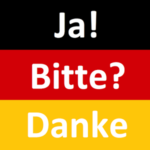 Nationality:
Nationality:
noun: German(s)
adjective: German
Ethnic groups:
German 91.5%, Turkish 2.4%, other 6.1% (made up largely of Greek, Italian, Polish, Russian, Serbo-Croatian, Spanish)
Languages:
German (official)
note: Danish, Frisian, Sorbian, and Romany are official minority languages; Low German, Danish, North Frisian, Sater Frisian, Lower Sorbian, Upper Sorbian, and Romany are recognized as regional languages under the European Charter for Regional or Minority Languages
Religions:
Protestant 34%, Roman Catholic 34%, Muslim 3.7%, unaffiliated or other 28.3%
Population:
80,454,408 (July 2018 est.)
Age structure:
0-14 years: 12.83% (male 5,299,798 /female 5,024,184)
15-24 years: 9.98% (male 4,092,901 /female 3,933,997)
25-54 years: 39.87% (male 16,181,931 /female 15,896,528)
55-64 years: 14.96% (male 5,989,111 /female 6,047,449)
65 years and over: 22.36% (male 7,930,590 /female 10,061,248) (2018 est.)
Dependency ratios:
total dependency ratio: 51.8%
youth dependency ratio: 19.6%
elderly dependency ratio: 32.2%
potential support ratio: 3.1% (2015 est.)
Median age:
total: 47.4 years. Country comparison to the world: 3rd
male: 46.2 years
female: 48.5 years (2018 est.)
Population growth rate:
-0.17% (2018 est.) Country comparison to the world: 208th
Birth rate:
8.6 births/1,000 population (2018 est.) Country comparison to the world: 213rd
Death rate:
11.8 deaths/1,000 population (2018 est.) Country comparison to the world: 19th
Net migration rate:
1.5 migrant(s)/1,000 population (2017 est.) Country comparison to the world: 53th
Urbanization:
urban population: 75.3% of total population (2015)
rate of urbanization: 0.16% annual rate of change (2010-15 est.)
Major urban areas – population:
BERLIN (capital) 3.563 million; Hamburg 1.831 million; Munich 1.438 million; Cologne 1.037 million (2015)
Sex ratio:
at birth: 1.06 male(s)/female
0-14 years: 1.06 male(s)/female
15-24 years: 1.04 male(s)/female
25-54 years: 1.03 male(s)/female
55-64 years: 0.98 male(s)/female
65 years and over: 0.78 male(s)/female
total population: 0.97 male(s)/female (2015 est.)
Life expectancy at birth:
total population: 80.57 years
male: 78.26 years
female: 83 years (2015 est.)
Education and Literacy:
99 percent literacy rate in population over age fifteen. Education compulsory until age eighteen. At age ten, after primary school (Grundschule), students attend one of five schools: short-course secondary school (Hauptschule); intermediate school (Realschule); high school (Gymnasium); comprehensive school (Gesamtschule); or a school for children with special educational needs (Sonderschule). At about age fifteen, students choose among a variety of vocational, technical, and academic schools. Higher education consists of many kinds of technical colleges, advanced vocational schools, and universities.
Related articles:
Structure of German Society
German Population
Women In German Society
Marriage and Family in Germany
Fertility in Germany
Mortality in Germany
Age-Gender Distribution
Religion in Germany
Population Distribution and Urbanization in Germany
Healthcare in Germany







